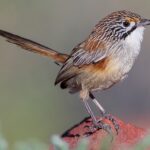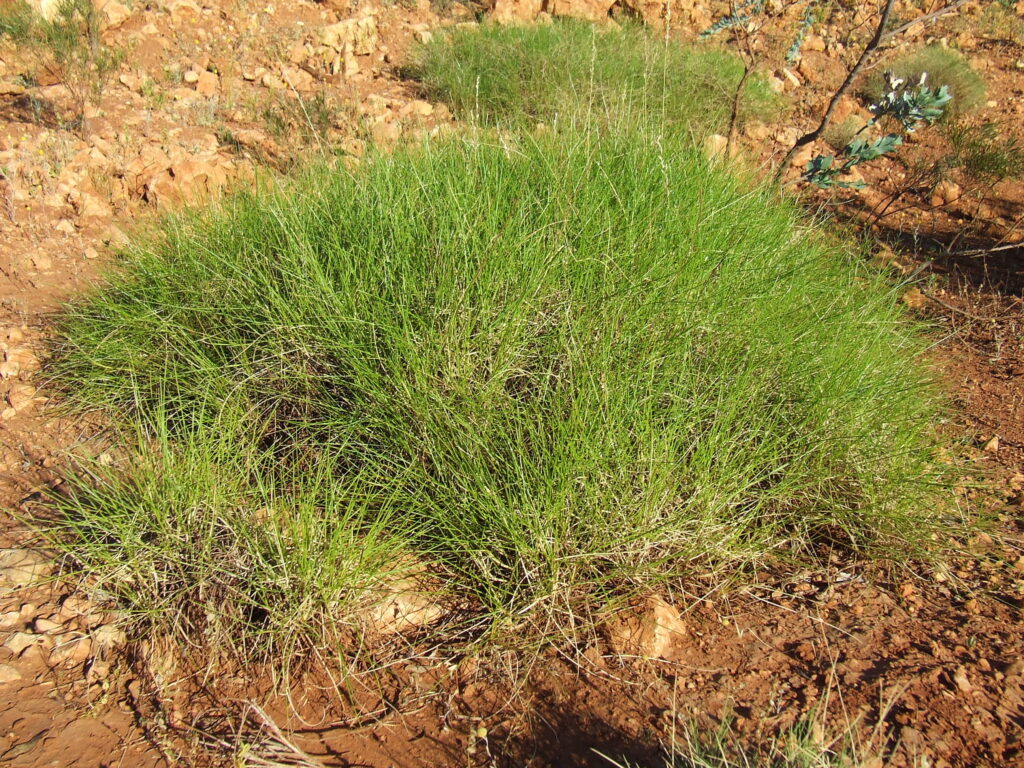Protected Magazine
The Opalton Grasswren
Hidden amidst the spinifex and rocky outcrops of the rugged Queensland outback, dwells a tiny avian gem: the Opalton Grasswren (Amytornis rowleyi). With its striking plumage and elusive nature, this diminutive bird embodies the spirit of resilience and adaptation in one of Australia’s most inhospitable environments.
Discovery and Description:
Discovered in 1990 by ornithologist Richard Schodde, the Opalton Grasswren is a relative newcomer to the world of avian taxonomy. With its distinctive black and white plumage adorned with bold streaks of chestnut, this small, ground-dwelling bird cuts a striking figure against the backdrop of its arid habitat.
Named after renowned ornithologist Clive Rowley, the Opalton Grasswren is a testament to the rich biodiversity that thrives in the remote corners of the Australian outback. Its unique coloration and cryptic behavior make it a challenging subject for study, with few sightings and limited information available about its ecology and behavior.
Habitat and Adaptations:
The Opalton Grasswren’s preferred habitat is the spinifex-dominated grasslands and rocky outcrops that dot the arid landscape of central Queensland. Here, amidst the labyrinthine maze of spinifex tussocks and boulder-strewn slopes, the grasswren finds refuge from predators and shelter from the scorching daytime heat.
To survive in this harsh environment, the Opalton Grasswren has evolved a suite of adaptations that enable it to thrive in its arid domain. Its slender build and long legs allow it to move swiftly and gracefully through the dense vegetation, while its cryptic plumage provides perfect camouflage against the rocky terrain.
As a primarily ground-dwelling species, the Opalton Grasswren forages for food on the floor, where it feeds on a diet of insects, seeds, and small invertebrates. Its sharp eyesight and keen hearing aid in detecting prey and avoiding predators, while its elusive nature and secretive behavior make it a challenging subject for study.
Conservation Status and Threats:
Despite its recent discovery, the Opalton Grasswren faces a precarious future due to habitat loss and degradation caused by factors such as grazing, mining, and wildfires. Fragmentation of its already limited range further compounds the challenges facing the species, restricting its ability to disperse and find suitable habitat.
Predation from introduced species such as feral cats and foxes also poses a significant threat to the Opalton Grasswren, preying on vulnerable individuals and competing for limited resources. Climate change exacerbates these threats, altering the availability of food and water and increasing the frequency and intensity of wildfires.
Conservation Efforts:
In response to the declining status of the Opalton Grasswren, concerted efforts are underway to safeguard its future. The recent State government’s landmark acquisition of 352,589-ha Vergemont Station adjacent to Diamantina National Park marks a significant victory for wildlife conservation in the area. By expanding protected areas and preserving critical habitats, this acquisition provides additional refuge for vulnerable species like the Opalton Grasswren, ensuring their survival in the face of mounting threats.
Looking to the Future:
As we navigate the complexities of conservation in the 21st century, the Opalton Grasswren serves as a poignant reminder of the importance of protecting Australia’s unique biodiversity. By working together to address the root causes of its decline and secure its habitat, we can ensure that this tiny avian jewel continues to grace the outback with its presence for generations to come.



